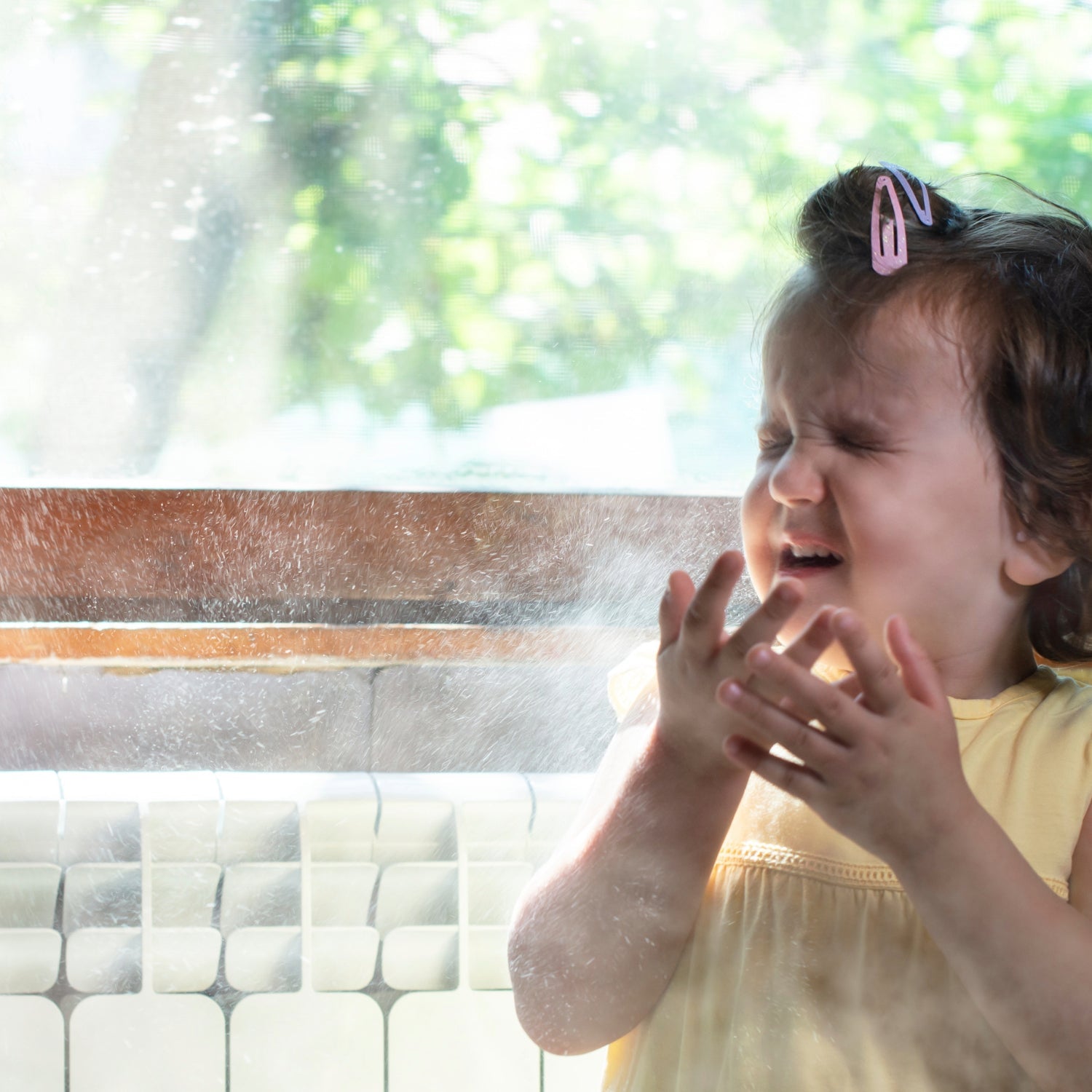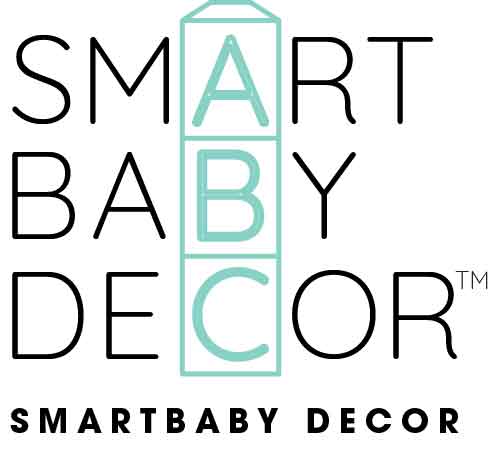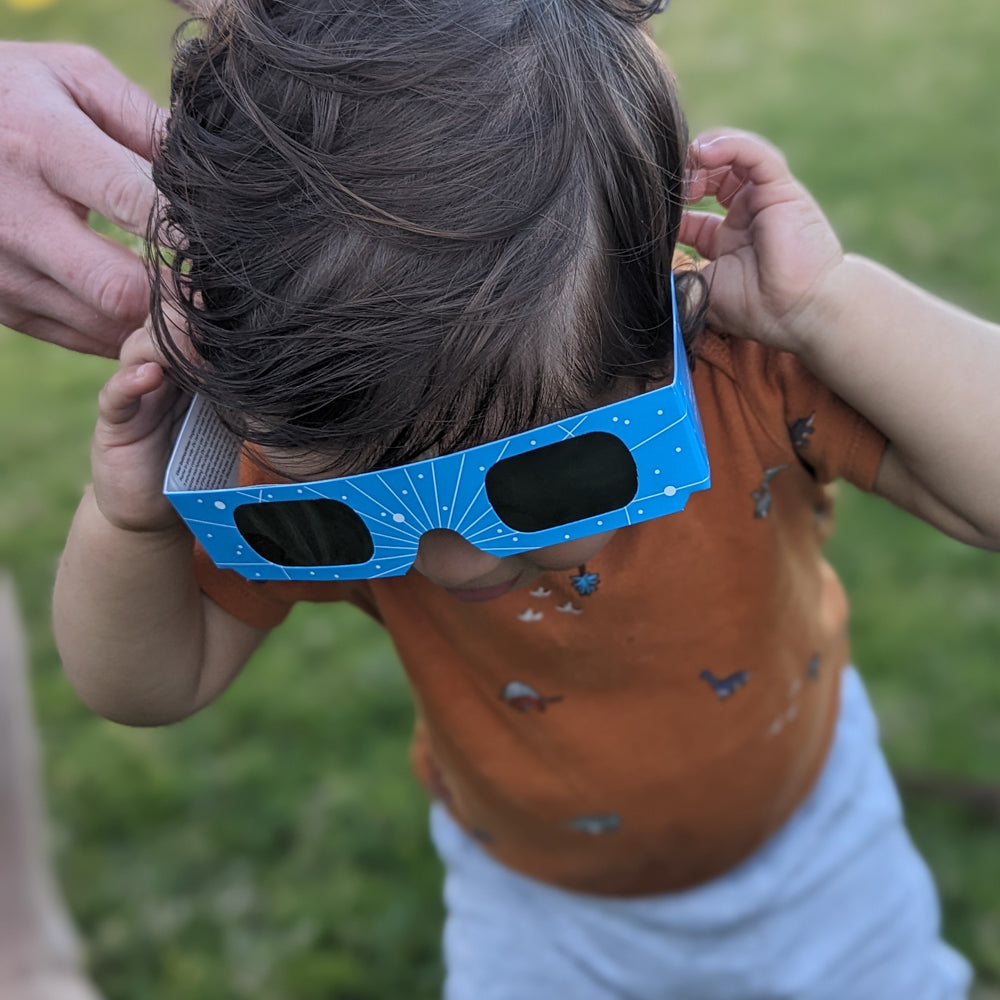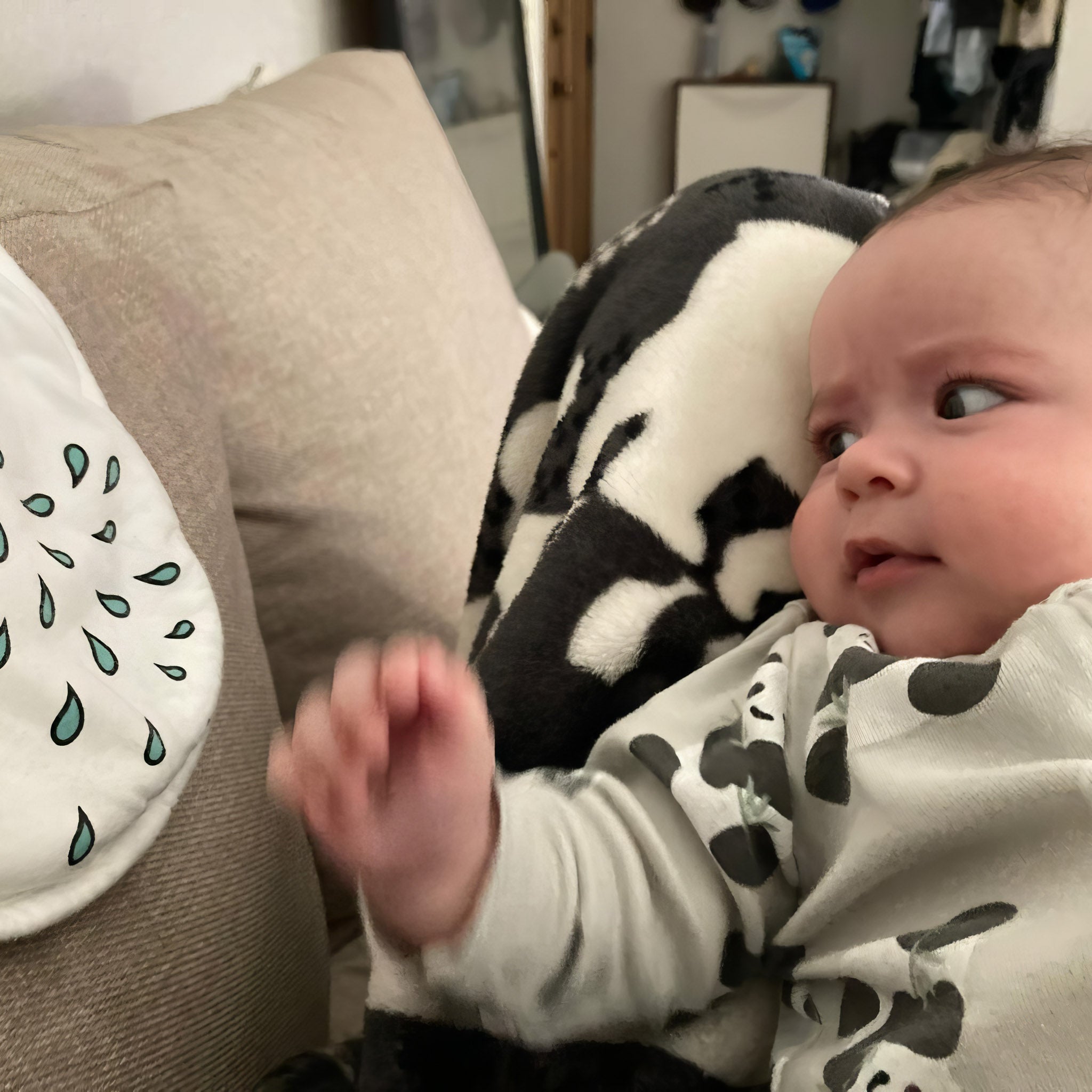
Vinyl: A sneaky source of toxins around your child?
As a parent, I am always on the lookout for anything that can potentially hurt my child. Some things are obvious, like sharp corners on furniture, electrical hazards and breakables, but what about the things we can’t see? What about the surfaces your child touches, or even the air they breathe? In this post, I’ll focus on exactly that – the air surrounding your baby and how to keep it as safe as possible.
Indoor versus outdoor air pollution
Most people are well aware of outdoor air pollution. We get notifications on our phone about air quality, we can even feel the difference between densely populated urban areas versus fresh air at the beach or while out on a hike. But what about inside your home? Indoor air pollution is finally getting the attention it deserves as more of our lives shift indoors. This pollution refers to the air quality inside your home, and includes things like the carbon monoxide level, dust, dander, and other airborne particles that can be especially toxic to babies, children and the elderly.
What contributes to indoor air pollution?
You may not think of your couch as leaching toxins into your home, but the scary thing is, it could be. Everyday activities like cooking dinner, or even spraying an air freshener can also contribute to indoor air pollution. Some of the most common items in your home that release toxins into the air are building materials, appliances like gas stoves and air fryers, furniture and upholstery, and yes, even air fresheners.
How does vinyl relate to indoor air quality?
Vinyl or polyvinylchloride (PVC) releases volatile organic compounds (VOCs) and other toxins into the air. It’s important to note that VOCs are an extremely broad category of compounds with many being produced naturally by humans and plants. For example, when you smell roses – you are smelling a VOC. But many VOCs are toxic and are linked to cancers, asthma, and other serious health issues. These are the ones we are referring to and they are especially bad for babies and children, whose developing lungs and skin are delicate and more susceptible to toxins.
So exactly how bad is vinyl (and other materials) in our homes? Truthfully, we don’t really know yet. Right now, the spotlight is on vinyl flooring. Turn on any home renovation show in the past decade and you’ll hear the term LVP (or luxury vinyl plank) flooring. With its amazing durability and affordability, it’s easy to see why it became such a popular choice worldwide. But the use of this material in such a widespread area of the home is raising some safety questions. While the research is still ongoing, many scientists are digging into how many VOCs are truly released from vinyl flooring, for how long they linger after installation, and how harmful they are to our bodies. Remember, babies and infants are literally hovering their faces over the floor for the first year of their life as they do tummy time and learn to crawl! While we wait to learn more from the research, scientists are starting to urge consumers to look for products labelled to have low VOCs.
In the years to come, I expect there will be new guidelines on the safe use of vinyl products in the home. Hopefully with more research and data, recommendations can be made such as the time vinyl needs to be in a well-ventilated area, more stringent laws regulating what products can be sold, or even warning labels that need to be included when purchasing these products. Until that time, how do we know how bad vinyl really is? The short answer is it definitely isn’t good. While the dangers of vinyl for indoor air pollution remains to be seen, it's bad enough to avoid it where we can. Especially for the spaces surrounding the youngest, littlest lungs.
Where else do you find vinyl in the home?
There are a lot of areas in a home where vinyl pops up, not just floors. Wall art and wallpaper are also examples. The surface of wallpaper is usually coated with a PVC material and wall art, or decals, are commonly made completely from vinyl. If you are covering your walls with wallpaper coated in a material that leaches harmful VOCs, it is likely to be a significant contributor to poor air quality. If you’re using wallpaper sparingly, or hanging a few wall decals, the surface area emitting the toxins would be far less. Nevertheless, why have a potential toxin-producing item in your home when you don’t have to? There are non-vinyl wall art options available now that make it so easy to avoid it altogether. Sometimes getting the cleaner, toxin-free item is much more expensive or hard to find. With wall art, the non-vinyl options are comparable in cost and even have added benefits. At Smartbaby Decor, we use a fabric-based material in all our wall art. This vinyl-free wall art is superior in other ways too. like being repositionable and recyclable. It’s a simple choice for parents when looking for home decor that is easier to use, safer for their baby, and better for the planet.
How to be proactive about your indoor air quality:
There are two ways to improve your indoor air quality:
-
Remove the source of the toxin and/or use items that pollute less.
As we just discussed, there are ways to select products that are better for your indoor air quality. Choosing fabric wall art and wallpaper instead of vinyl is one way. There are also great low or no VOC options when it comes to paint. In our search for the cleanest paint we could find for our home we found Lullaby Paints by ECOS. -
Get a good air purifier.
One unexpected benefit from living through a pandemic is good air purifiers are now readily available and fairly affordable. The one we use in our nursery is here, but any HEPA filter that meets the square footage of the room will do the trick.
Conclusion
It can be difficult and overwhelming to navigate a world of toxins, chemicals, forever plastics, and more, especially when you’re thinking of your child’s wellbeing. But small, informed choices can make a big difference. Wall art is one of them! If you’re thinking of adding a touch of fun to a wall in your child’s nursery, big kid, or playroom, choose a non-vinyl option that has been safety tested. It’s an easy choice and another way to eliminate a source of VOCs in your child’s immediate space. You can’t do much to control the air around your child when they’re outside, but you can make sure they’re breathing clean, toxin-free air in their home. In an upcoming post, I will give you a checklist to help you create a clean nursery with information on certifications to look for in your furniture, linens etc., so stay tuned as we continue our series!
P.S. Another item that is more readily available nowadays is an indoor air quality monitor that will measure the VOCs in your home! We got this one on Amazon and it seems to work, but I haven’t tried others out yet so I can’t give you a comparison at the moment. Try it out if you’re interested in what the air quality is like in your home!







Leave a comment
This site is protected by hCaptcha and the hCaptcha Privacy Policy and Terms of Service apply.